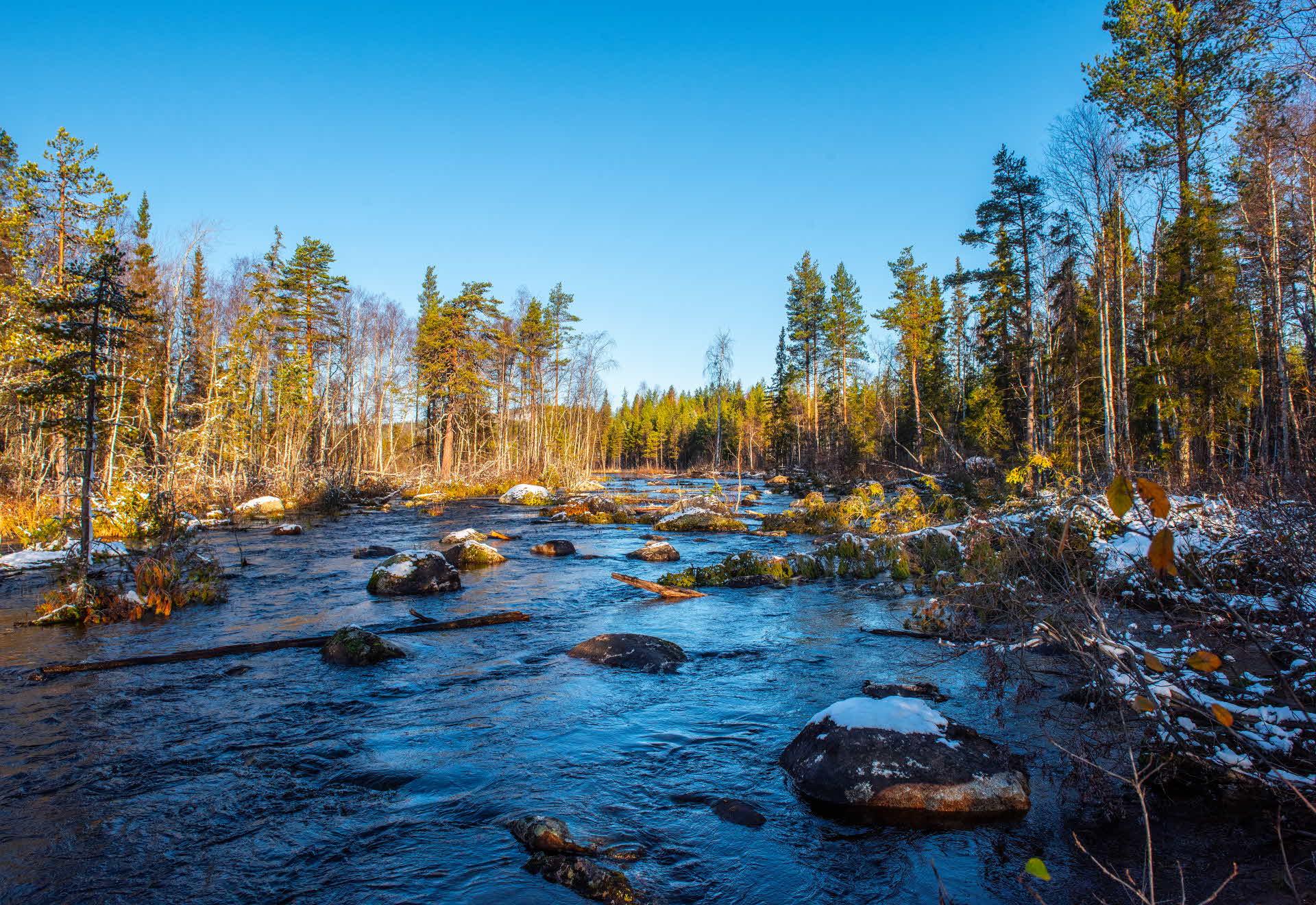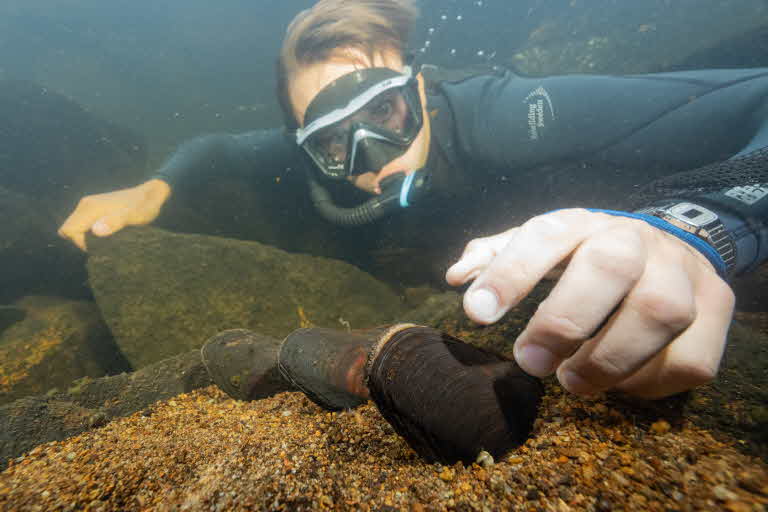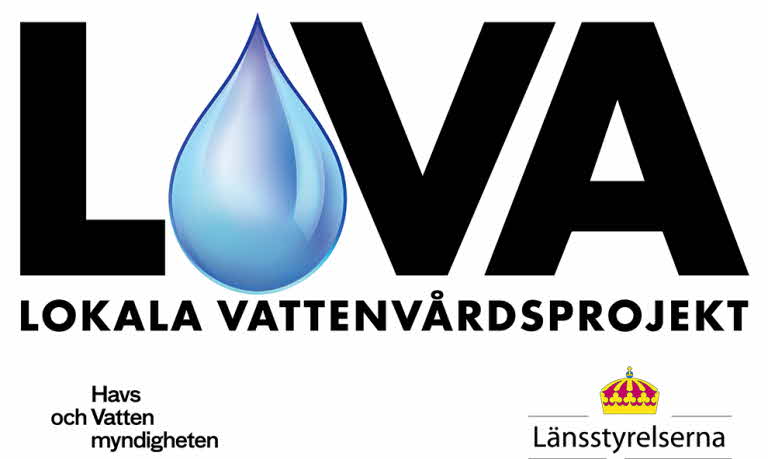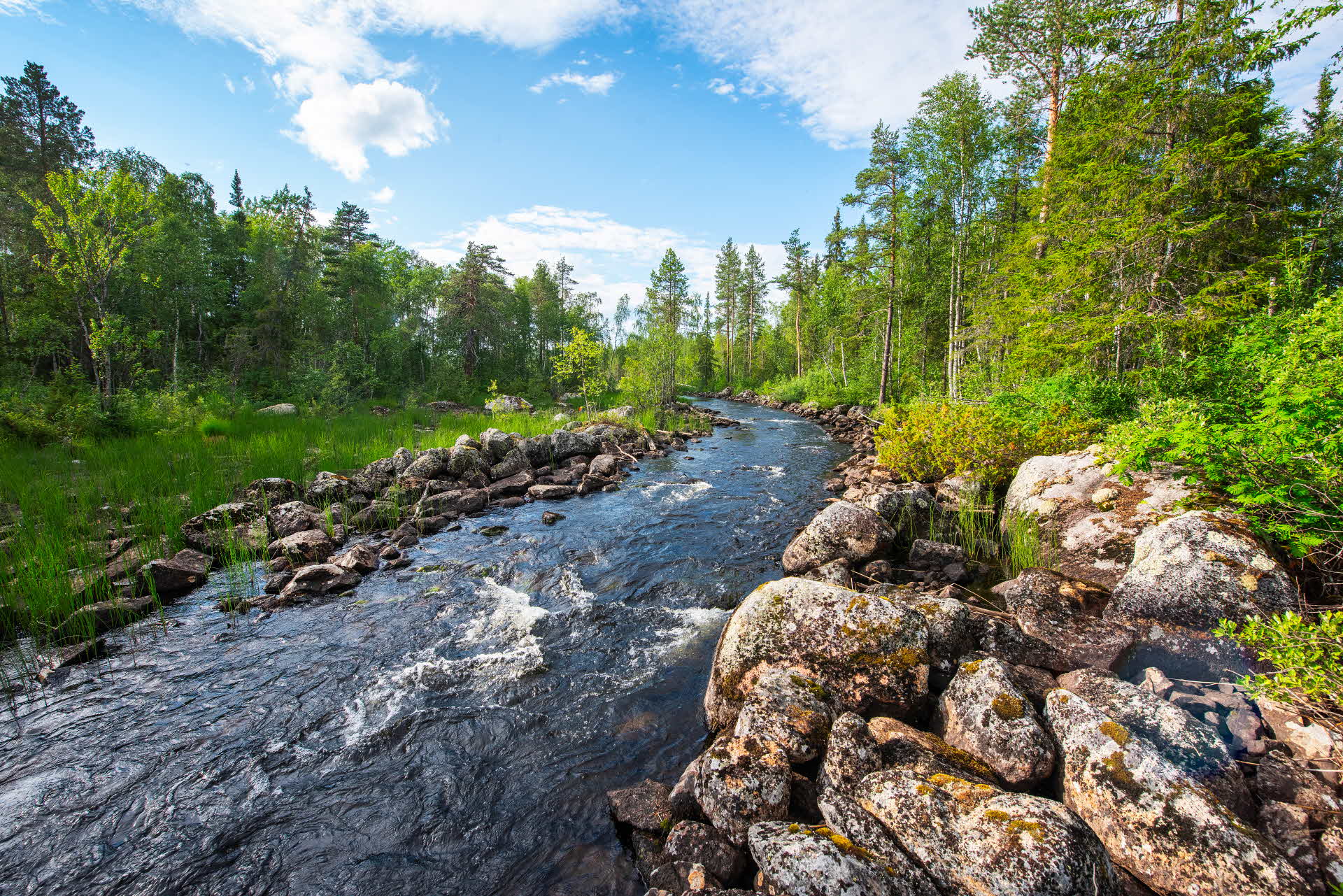Before restoration. Photo: Per Lundström

Successful water restoration on SCA land
- News
- Forest
- Sustainability
Rewilding Sweden has restored parts of Abramsån in Norrbotten, with successful results. The work that has been carried out on SCA's land includes, among other things, returning old logging remnants to the watercourse to recreate natural water and shoreline forest environments and benefit a large number of species both in and outside of the water.
SCA is engaged in several comprehensive water conservation projects that involve our land, either as landowner or by performing actions ourselves. For the initiative concerning Abramsån, SCA has given the fundraising foundation Rewilding Sweden permission to work in the parts of the river that run through SCA land. The project is funded through LOVA grants from the county administrative board and from Rewilding Sweden, with the aim of restoring the natural values that exist and have existed in the water landscape.
Started on SCA land
“Rewilding Sweden's goal is to restore the entire watercourse, and since SCA was so willing, we started in the upper parts of the stream. Now during the winter, when the restoration takes a break, we are working to contact private landowners in the lower parts of the stream with the aim of obtaining permissions to restore the stream there as well. We are overwhelmed by all the positivity we encounter when we talk about our vision for the stream and the surrounding environment”, says Henrik Persson, Managing director at Rewilding Sweden.
The Abramsån river is approximately 30 km long and flows through the municipality of Boden as a tributary to the Råne River, one of Europe's unregulated forest rivers. During the logging era, the river was heavily cleared of rocks to facilitate the transportation of timber. The river's habitats were altered, resulting in negative impacts on plant and animal life. When logging ceased, the walls of cleared stones along the watercourse, as well as timber chutes and logging tables, remained. Over time, several of the latter have become detached from the bottom and accumulated in enormous log jams.
“These log jams do not pose direct obstacles to fish migration, as water flows beneath them. However, it has been a challenge to navigate past these log jams with a 24-ton excavator”, explains Henrik.
Rebuilt structure of the stream

In the summer of 2023, Rewilding Sweden began work on the five-kilometer stretch of the stream that runs through SCA's land and is to be restored in the first stage. With the help of an excavator, old timber remnants were removed and the structure of the stream was rebuilt by creating levelled rapids, digging deep holes, and placing stones and dead wood to mimic a natural waterway. In this way, environments are created where fish and other species thrive and can reproduce.
Abram Stream is located in a relatively deep valley, which has a rich flora, and many conservation species thrive here, both on land and in water. For example, the rare and sensitive freshwater pearl mussel lives in the stream. Freshwater pearl mussels serve an important function as they filter the water, improving water quality for other animals.
"In order to prevent harm to the mussels that were already in the stream, we relocated thousands of individuals to a safe place upstream in the watercourse before starting our work. These individuals will be moved back when all the work is completed," Henrik explains.
Successful efforts
Restoring waterways takes time. Rewilding Sweden managed to restore approximately 22 meters per day in 2023. Out of the five kilometers that need to be addressed, half of them was completed it this year, with the remaining work to be done in the next season.
“It's tough work, but it's very rewarding to see the river and its adjacent riparian forest environments come back to life," says Henrik. "We succeeded well with our efforts this year! An underwater photographer who documents much of our work was able to see how, after just a few days, there were young trout swimming in almost every deep pool that we had dug. This is really exciting because these were sections that were previously considered almost sterile from a fish perspective. The previously high water velocity made it impossible for fish resting places and accumulation of food. The insect larvae that previously lived in the river consisted almost exclusively of midge larvae. Nowadays, there are considerably more habitats that contribute to greater biodiversity.”
Restoring watercourses like Abramsån also benefits the surrounding environment. When water moves slower through the landscape, it provides ecological advantages for various processes, vegetation, birds, insects, and fish.

Rewilding largely focuses on enabling nature to stand on its own, and without a functioning hydrology, which refers to the movement of water through the landscape, this becomes difficult. Hydrology is the foundation of biology, including the composition and distribution of vegetation as well as the habitats of animals. Therefore, our guiding principle is to create "wild water landscapes," Henrik concludes.
Divers near a freshwater pearl mussel. Photo by Arthur de Bruin.
Pictures


After restoration. Photo: Per Lundström
About Rewilding Sweden
Rewilding Sweden is a Swedish partner of Rewilding Europe. They work to give more space to wild plant and animal life across Europe. The Swedish vision is "A wilder Sweden with more room for the lives of animals and nature, benefiting society and nature."